-
Car Reviews
- All reviews
- Midsize SUVs
- Small cars
- Utes
- Small SUVs
- Large SUVs
- Large cars
- Sports SUVs
- Sports cars
- Vans
Latest reviews
- Car News
-
Car Comparisons
Latest comparisons
- Chasing Deals
After some delay, the hybrid version of the Chinese midsize all-terrain SUV has arrived in Australia. But is it worth the steep premium over its petrol twin?
The new GWM Tank 300 Hybrid 4×4 SUV has just been launched in Australia. And if you’re reading this thinking “hang about, didn’t it actually first launch almost 12 months ago?” then, yes, you’d be correct.
This is your reviewer’s third swing at Tank 300 locally, the first back in January 2023 with pre-production examples of the Hybrid at a dedicated off-road facility, and the second with the petrol Tank 300 mid-year, on and off-road, around the time that version hit showrooms.
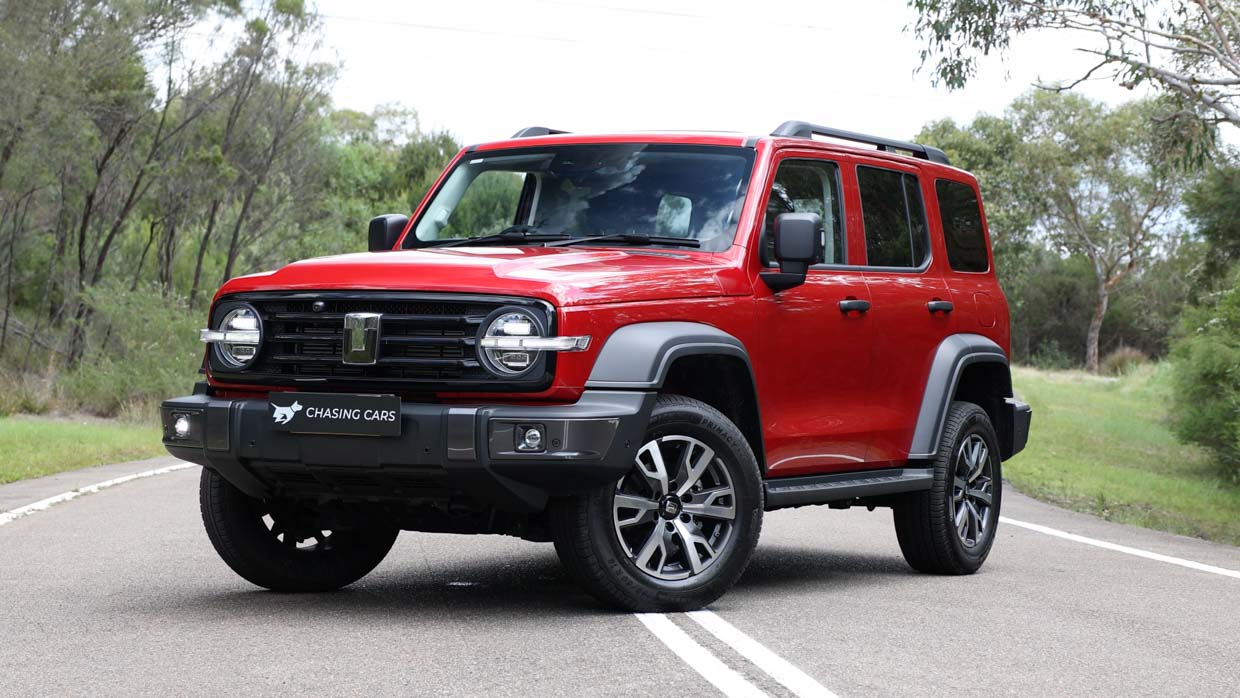
And yet it’s taken 11 months for the GWM petrol-electric hybrid spin to make it into customer hands.
Why? The production delays were to blame, and ones that also afflicted the small electric Ora hatchback we also drove 11 months ago that also suddenly sat in absent gestation.
Now that its turbo-petrol-electric powertrain has been released into the wild – a thoroughly unorthodox combination for an all-terrain vehicle – we get to see how its novel methodology equates in real-world Aussie driving.
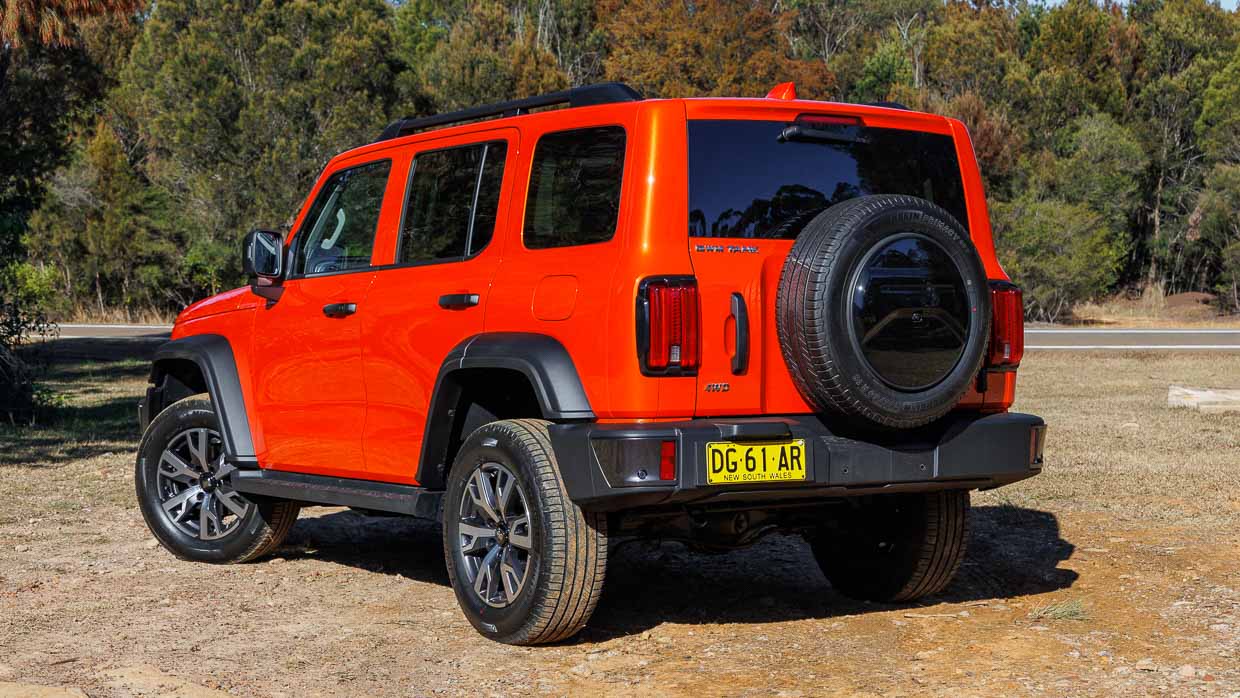
Pictured: the Tank 300 Ultra petrol version reviewed previously
At 255kW and 648Nm, the Hybrid outpunches the 162kW and 380Nm petrol versions of Tank 300 by considerable measure. As right could be expected given that electrification comes at a significant fiscal upcharge.
The base Lux Hybrid is, from $55,990 driveaway, nine grand pricier than the petrol Lux on road ($46,990). Our Ultra Hybrid test car is, at $60,990 driveaway, a neat $10K up on the ICE-power high-spec Ultra ($50,990) on road.
So the all-you-can-eat Ultra Hybrid is getting up there in price, but it does appear reasonable value for a fully capable all-terrain wagon, and one that – at 4.8m long and 1.9m both tall and wide – straddles medium and large SUVs for size and interior spaciousness.
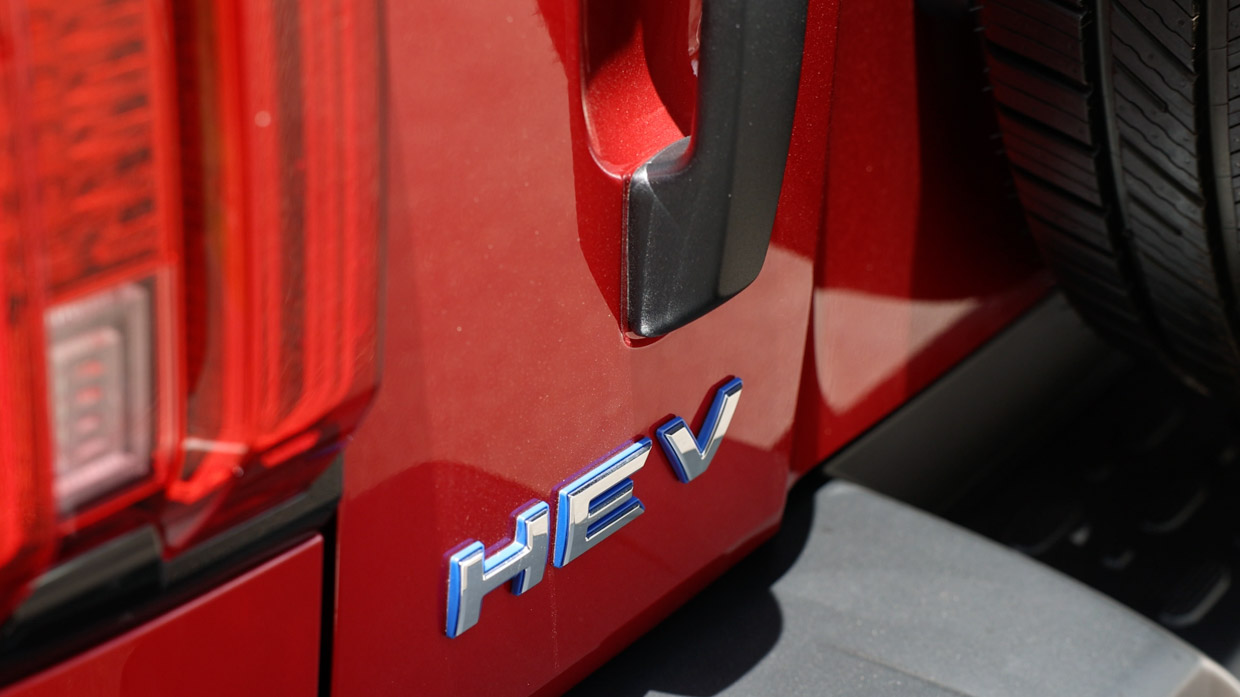
Still, key competitors are ladder-frame stalwarts in Toyota Fortuner, Mitsubishi Pajero Sport and Isuzu MU-X, even though the Tank 300 looks and largely feels a fancier and fruitier alternative spin on the conventional 4×4 wagon theme.
Back 11 months ago, the turbo-petrol-hybrid Tank 300 proved itself a capable but interestingly unique off-road experience, especially the influence of the instant electric torque assistance at low speed across rough terrain. It’s quite unlike a diesel powertrain in a semi-serious 4×4 environment.
In fact, there does seem to be an emerging trend towards turbo-petrol-hybrid choices in 4WD-land, but it’s early days in a migration away from the widespread adoption of diesel power. Both Toyota’s forthcoming Tundra and new-generation Prado look to be heading in a similar powertrain direction.
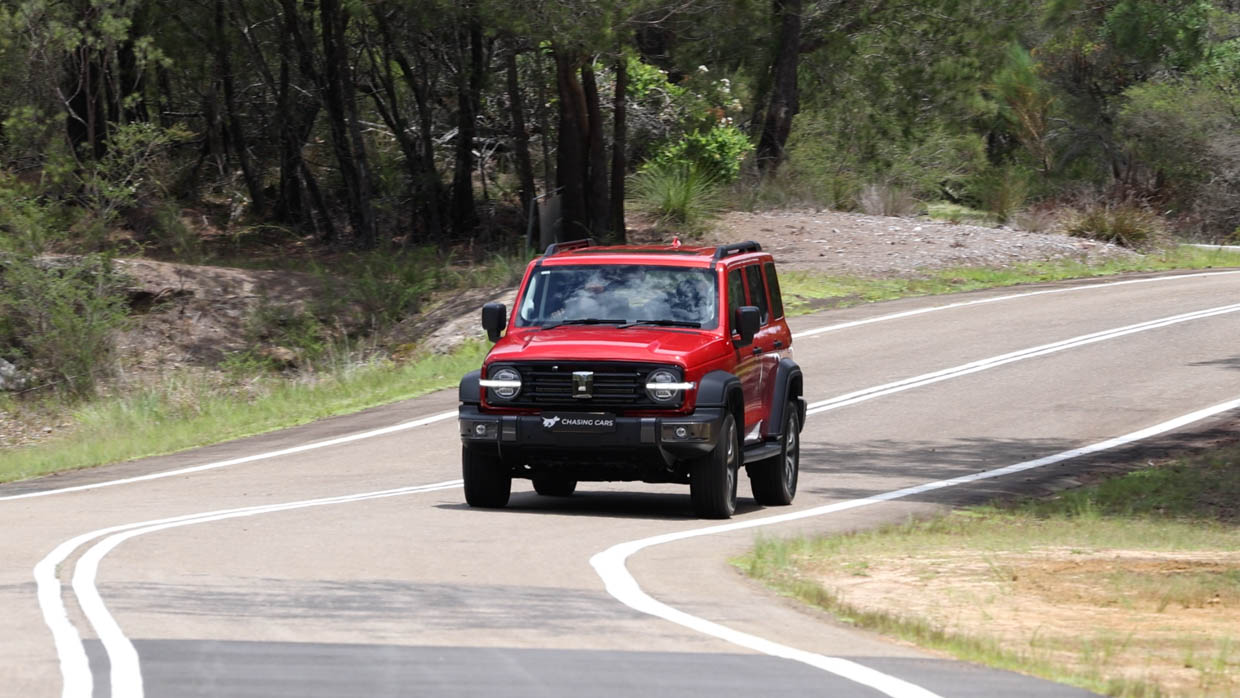
But here and now, though, this Ultra Hybrid test car is charged with convincing this reviewer that it’s adept at the day-to-day urban grind.
And at a $10K higher outlay, it’d also want to bring some tangible improvements over the Ultra petrol version that did (mostly) impress during its week-long garage review in mid-2023.
As standard, both the Ultra petrol ($50,990 driveaway) and Ultra Hybrid ($60,990 driveaway) offer the following features:
Beyond these, the hybrid version exclusively fits:
There are other differences between petrol and hybrid versions of the Ultra: the former gets an eight-speed automatic transmission, while the hybrid is a nine-speeder.
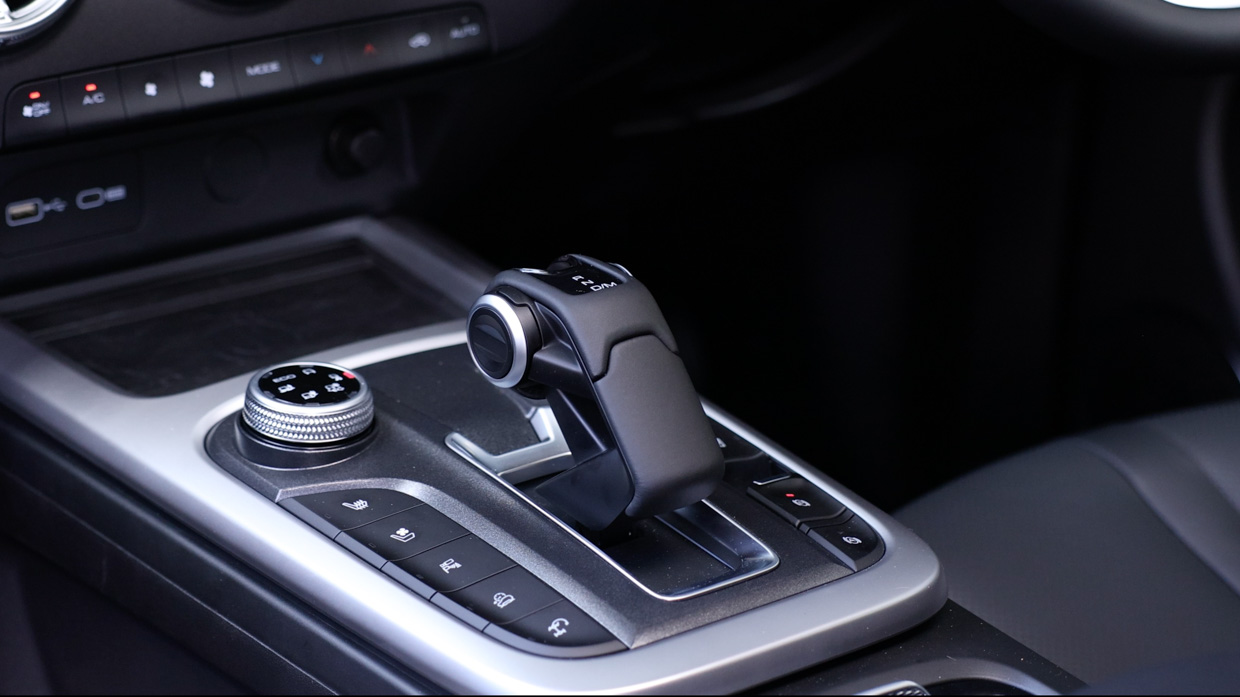
Other 4×4-centric inclusions are nine different all-terrain modes in the hybrid versions of Tank 300, while including Assisted Turn (for off-road maneuverability) and Crawl Mode (5-12km/h low-speed modulation).
The Ultra Hybrid trim, though, features Auto Reverse Tracking (for backing out of tricky and tight situations) and Auto Park Assist semi-automonous parking.
Premium paint, such as our test car’s Lunar Red metallic, costs an extra $595.
Much like the petrol Ultra reviewed in the past, the Hybrid’s manner is smooth and quiet on road. It’s a very different experience to the GWM’s Thai-built diesel competitors, and probably closest to the likes of the Toyota Kluger hybrid for commuting character and vibe.
Where the Hybrid’s 162kW/380Nm petrol sibling tended to fall a bit short, though, was in on-tap shove. Instead, the novel turbo-petrol-electric format kicks off with a lustier 180kW (and identical 380Nm) internal combustion shove and plies an added 78kW and 268Nm of lithium-ion fed electric wallop when you want and need it most.
At least, that’s what you’d hope for…
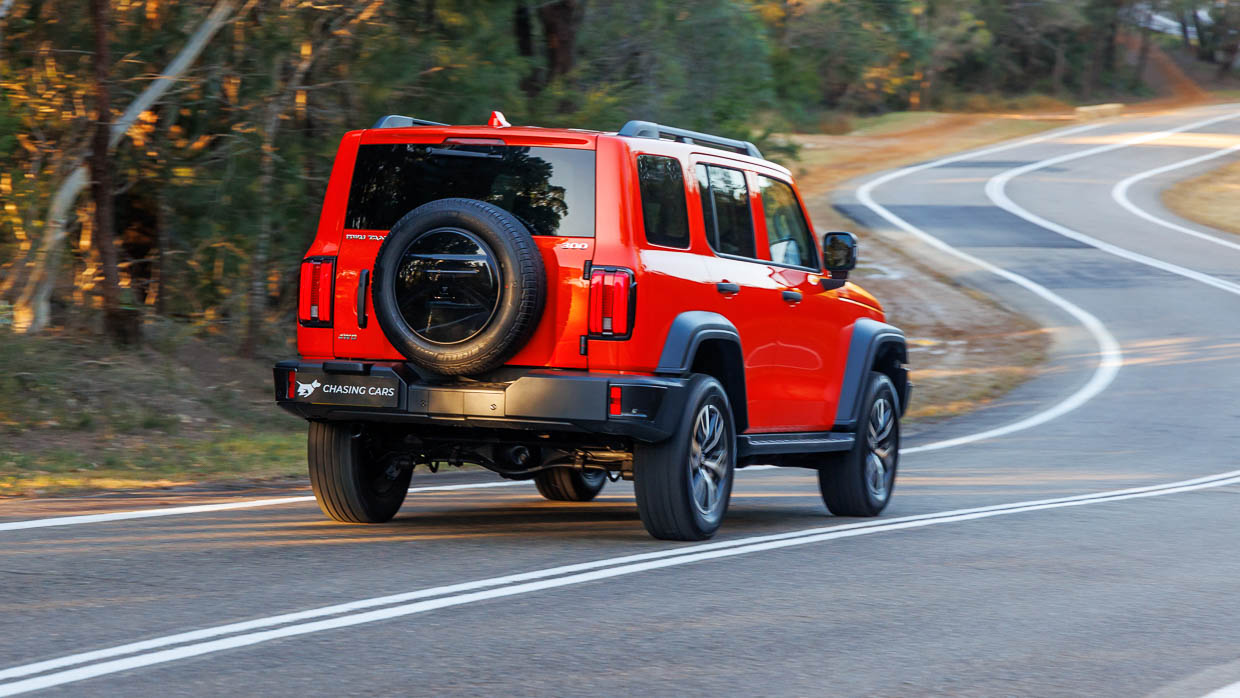
Pictured: the Tank 300 Ultra petrol
In sport drive mode, the Hybrid gets up and boogies very hard indeed, making a mockery of the electrified Tank 300’s considerable 2305kg kerb weight.
The initial thrust and throttle response is downright heady and lusty, and certainly something different for the usually lazy, mostly diesel competitive set of its segment rivals.
Thing is, it mounts acceleration hard and fast enough that sport really isn’t all that suitable nor usable around town…unless you’re very concentrated with your right foot movement, which gets tiresome quickly. Nor does it have much character or vibe on the march.
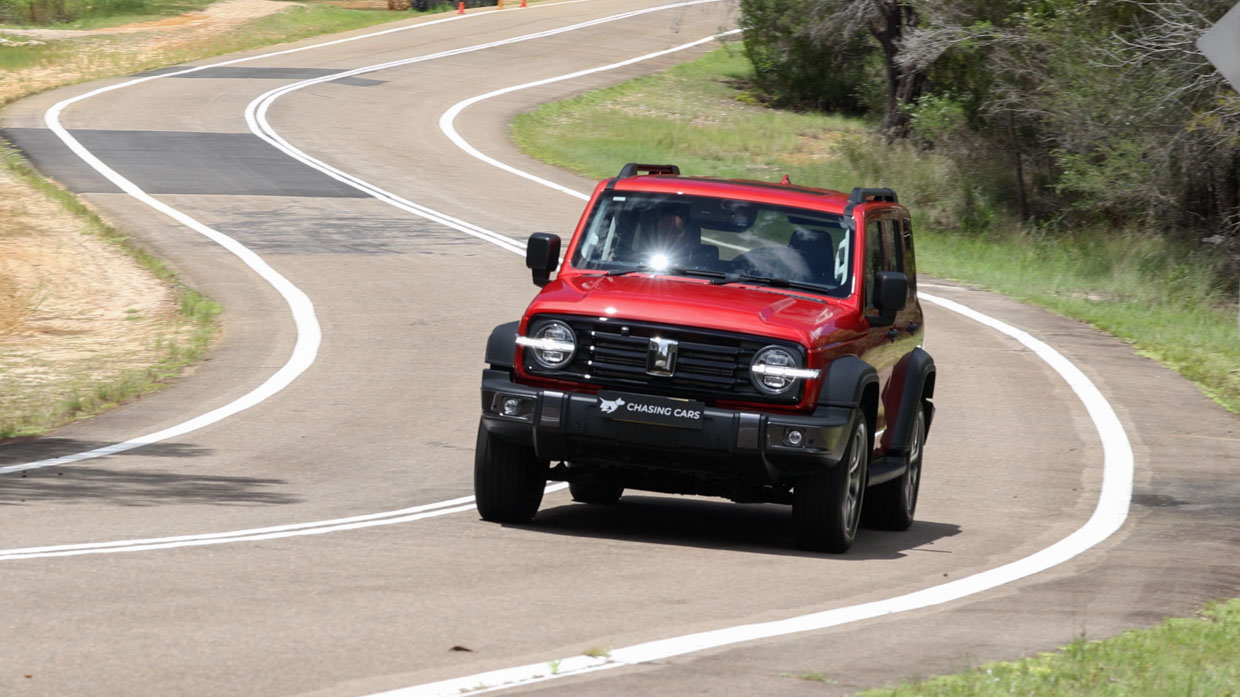
In its normal and default mode, the powertrain is much more lethargic. It leverages combustion more than electrons off the mark and acceleration tends to swell rather than swing. This in itself makes it pretty handy for low-speed stuff – including off-road – but general responsiveness can be a little lacklustre.
Worth noting is that this self-charging hybrid has a different manner than the format favoured by petrol-electric Toyotas that are familiar to many drivers.
The GWM system doesn’t pass the drive baton between petrol and electric drive conspicuously and rarely dips into full electric drive unless you start fiddling with specific mode settings. Really, the motor supports the engine with torque, mostly seamless and silently, when you need extra shove.
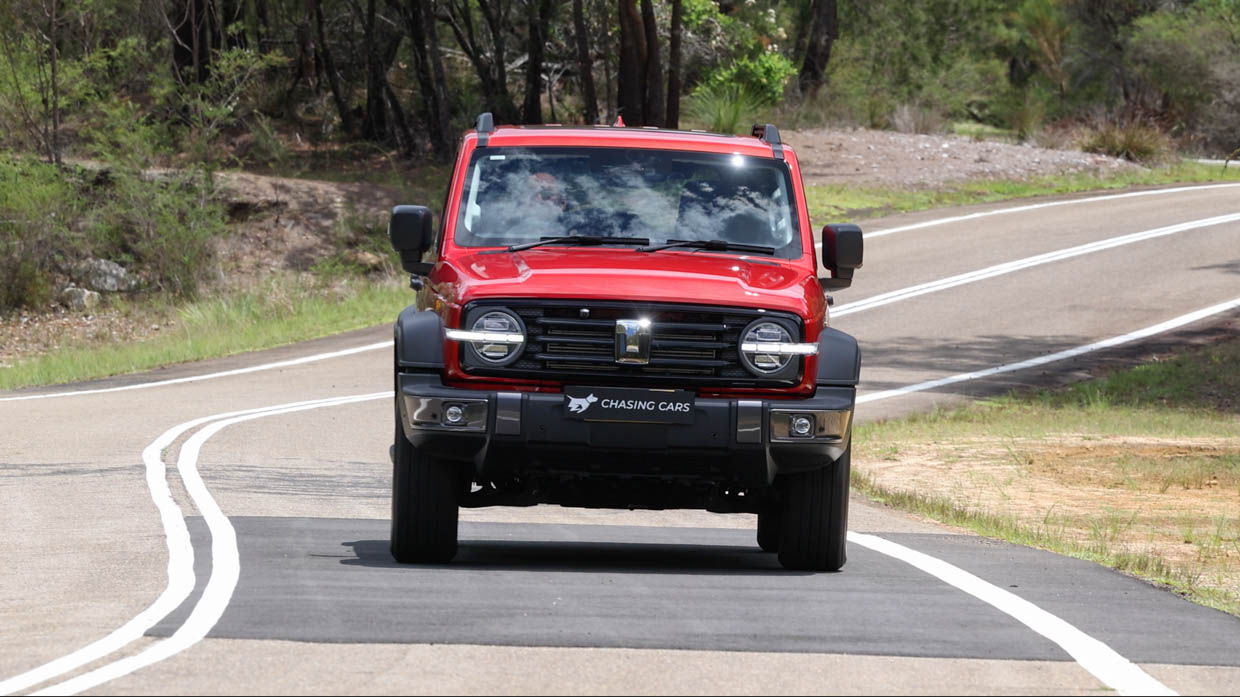
It’s a mostly satisfying and dignified hybrid drive method, if one prone to few ripples and hiccups as you roll on and off the throttle around town. It’s smooth, but it’s no billiard table.
GWM is quite upfront that its hybrid method is to serve performance prowess rather than fuel economy, and this bears out at the bowser. Its claim is 8.4L/100km combined, not all that rosier than the (turbo) petrol’s 9.5L.
It’s not quite that optimistic in the real-world – double figures are the norm – and nowhere near as frugal as even Toyota’s thirstier stuff, such as the soft-road Kluger Hybrid AWD (5.6L as tested).
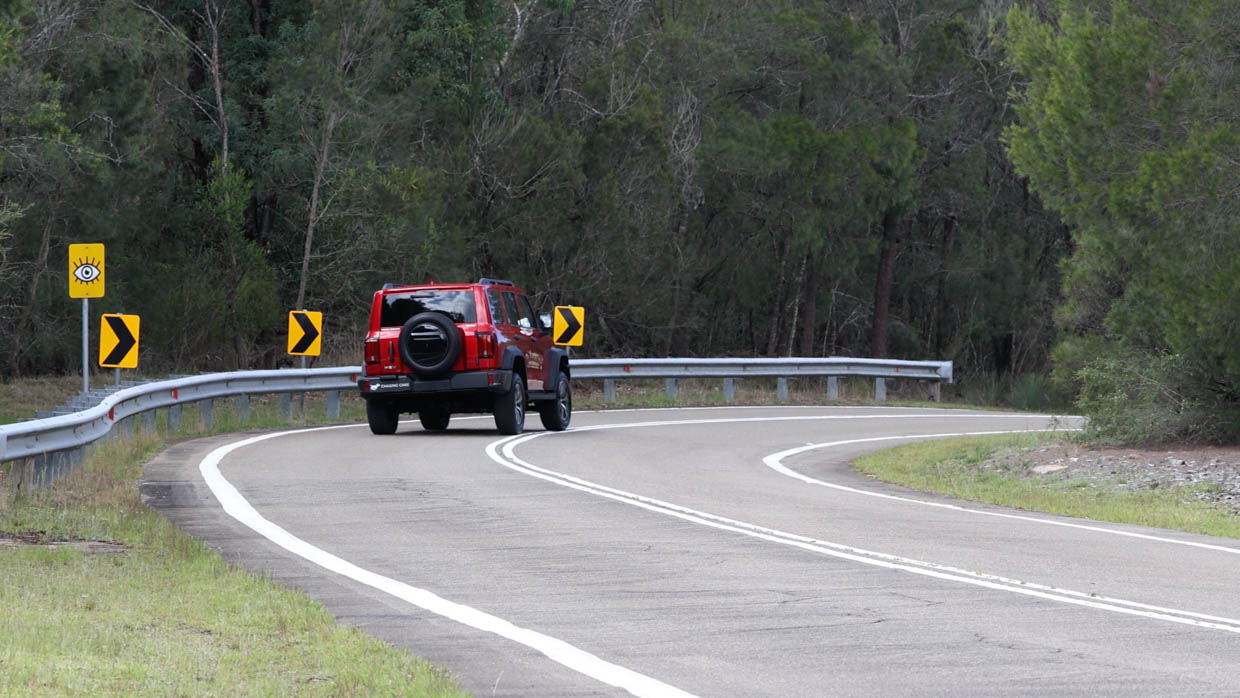
All versions of the Tank 300, petrol or hybrid, are rated to tow just 2500kg, which is lower than rivals such as Fortuner (3200kg) or Mitsubishi Pajero Sport (3100kg).
The concern, though, is gross vehicle mass. You won’t be loading the (2305kg) Tank up with many occupants and luggage before you hit its low 2725kg GVM ceiling.
In terms of ride quality, the Ultra Hybrid is pretty decent if not quite as polished as we remember the petrol version was and is.
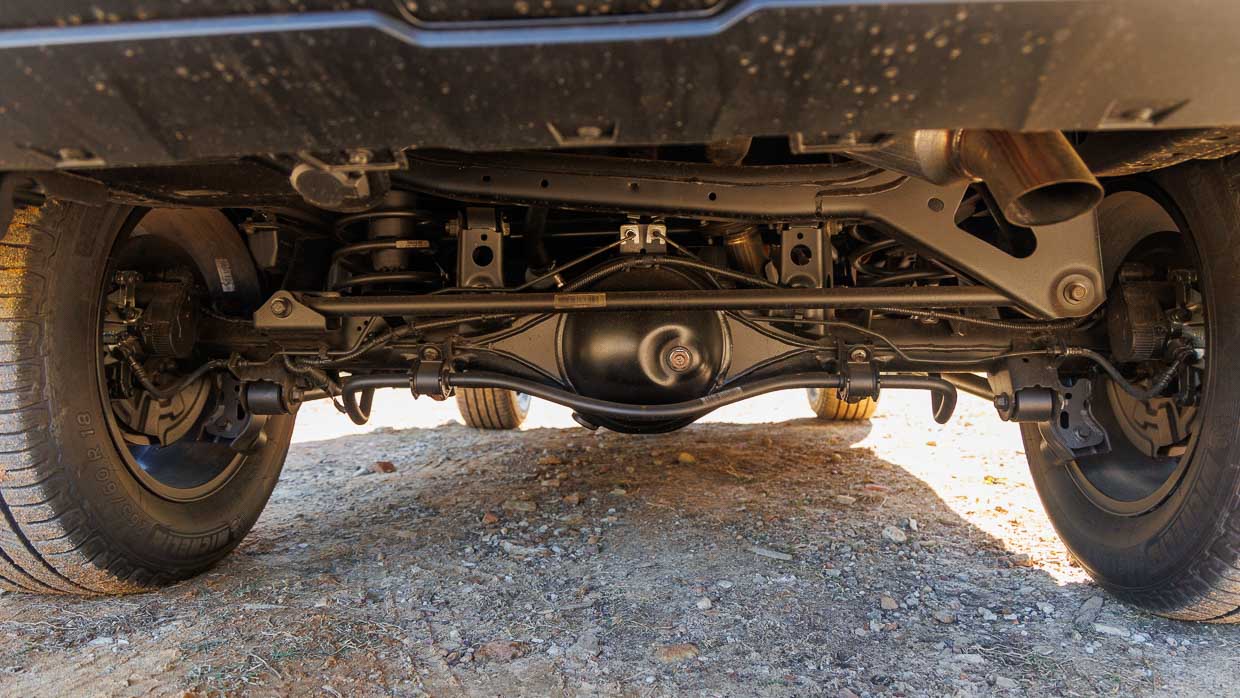
Pictured: the Tank 300 Ultra petrol model
It sits on a combination of double-wishbone front and coil-sprung live axle rear, with 18-inch rolling stock compromising of chubby 60-series rubber with a whopping 265mm tread width.
The net effect is that most of the large suspension compression hits are dealt with acceptable compliance, though smaller and sharper road imperfection can send minor shocks up the thought cabin.
Handling wise, the driver isn’t connected to the experience all that faithfully and the steering is fairly aloof, though to be fair this is par for the ladder-frame 4×4 wagon course.
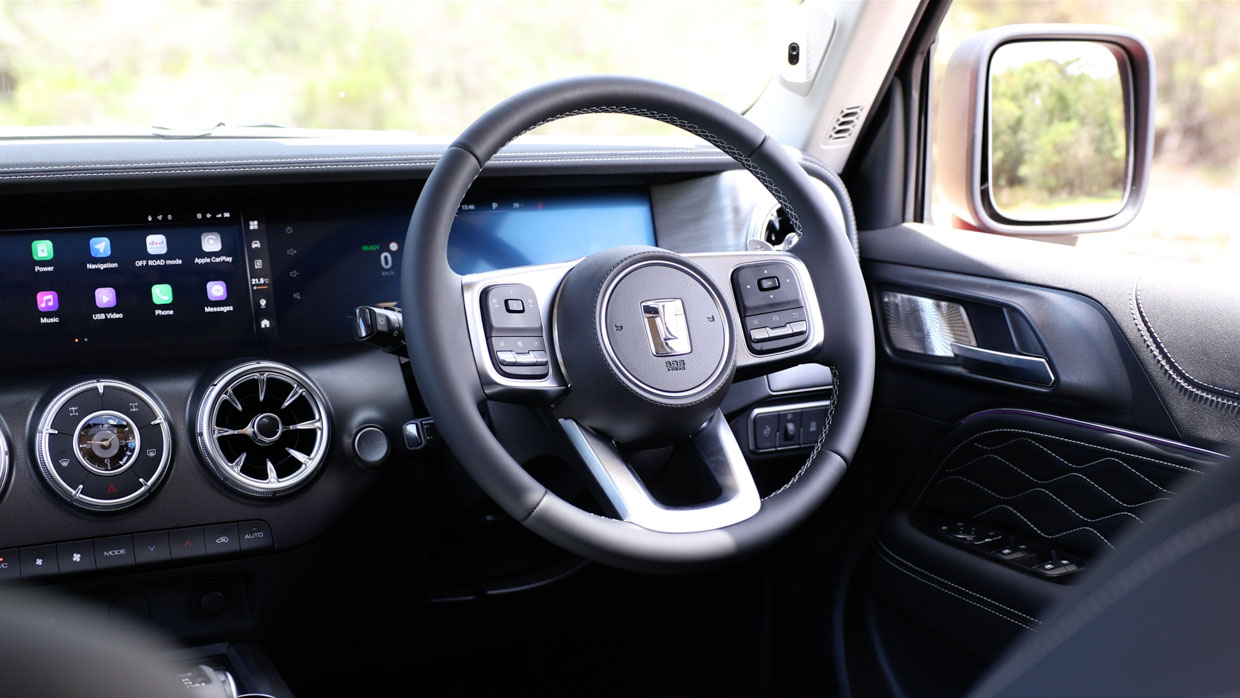
It’s not too floaty or flaccid – it pretty much mirrors the lighter petrol Tank 300 Ultra – and there’s ample body control that does go some way to amplifying the merely moderate lateral grip of the tyres.
At its core, it could be a very handy rig to settle into for long-haul touring except for one hugely irritating trait: its incessant and poorly calibrated safety systems.
In the past, we have griped about the petrol version’s wayward nature when it came to lane keeping smarts – a topic that GWM has invested some effort to amending. But the Hybrid? Well, that’s a far larger rabbithole of frustration to fall down.
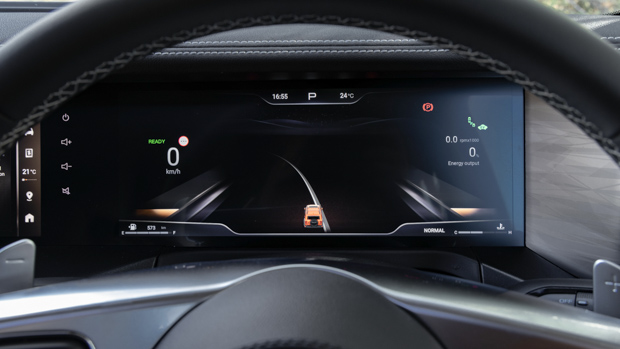
Slight overspeeding (indicated, not actual), school zones (day, night or weekends) or, unusually, any merging road at junctions is met with an audible warning.
And not a beep or bong, but with a long-winded verbal instruction by a slightly terse female voice. It commences the moment you get moving, and is ever-present along every stretch of every road during every trip.
It gets worse. The most poorly calibrated of its over-nannying safety advice is that attention warning, ‘encouraging’ you to pay attention to the road. Divert your gaze anywhere from the straight ahead at any time and for seemingly any duration prompts the same, long-winded disciplinary response from the vehicle.
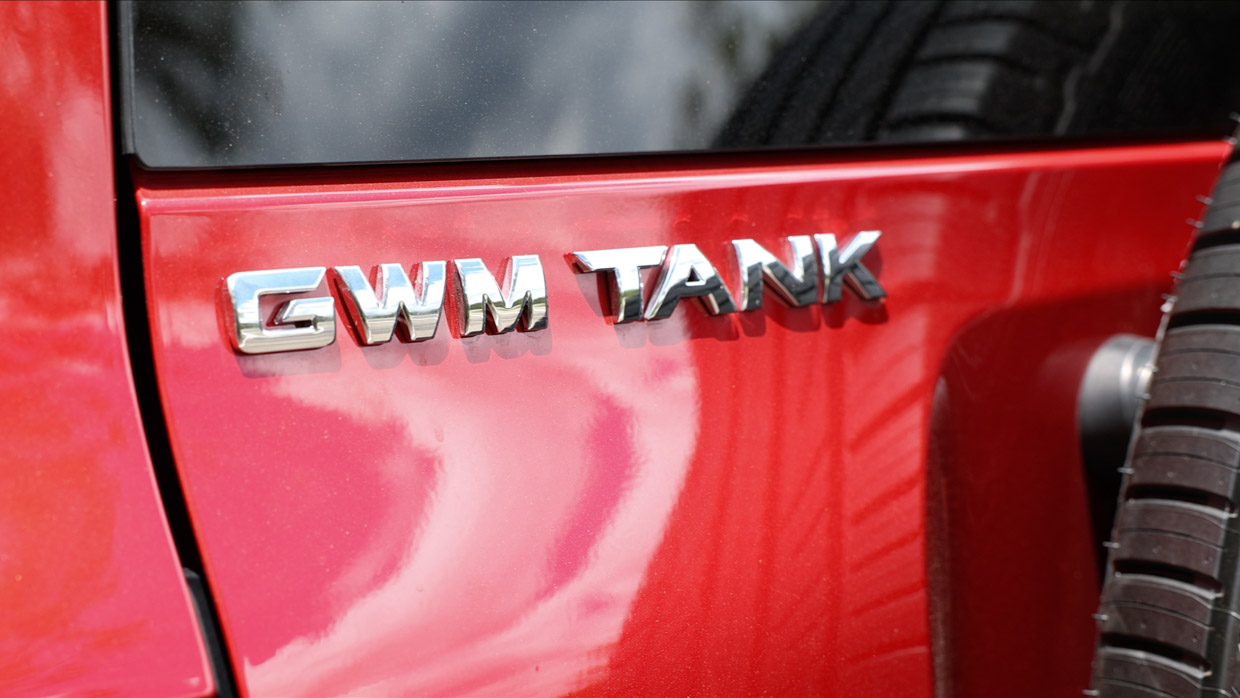
The Ultra Hybrid fits more active ‘advice’ than the other Tank 300s (see below), some of which can be defeated if you start digging deep in touchscreen submenus – for which you’ll be punished on the move – and others you can’t.
The lane keeping, lane centring, lane departure warning and emergency lane keeping system – yes, four different ones – will also bleat incessantly even though all evidence suggests, via the driver’s eyes, that you’re motoring along normally.
The petrol version of Tank 300, while not perfect, is not afflicted by quite so many utter frustrations. And your reviewer will be gobsmacked if these gremlins are not attended to in what could be a major suite of software updates sooner rather than later.
The Tank 300’s Ultra cabin fitout does present quite nicely. It looks impressive and quite upmarket against many of its segment competitors that want for similar money.
If there are three obvious facets right from the get-go it’s that a) GMW is going for broke with its premium-alike aesthetic while b) still integrating a few too many cheapy plastics, and that c) there’s not really that much that separates this $61K flagship from the $47K entry Lux.
That includes the lavish dual-12.3-inch digital display, the jewel of the cabin space, that’s offered up and down the lineup.
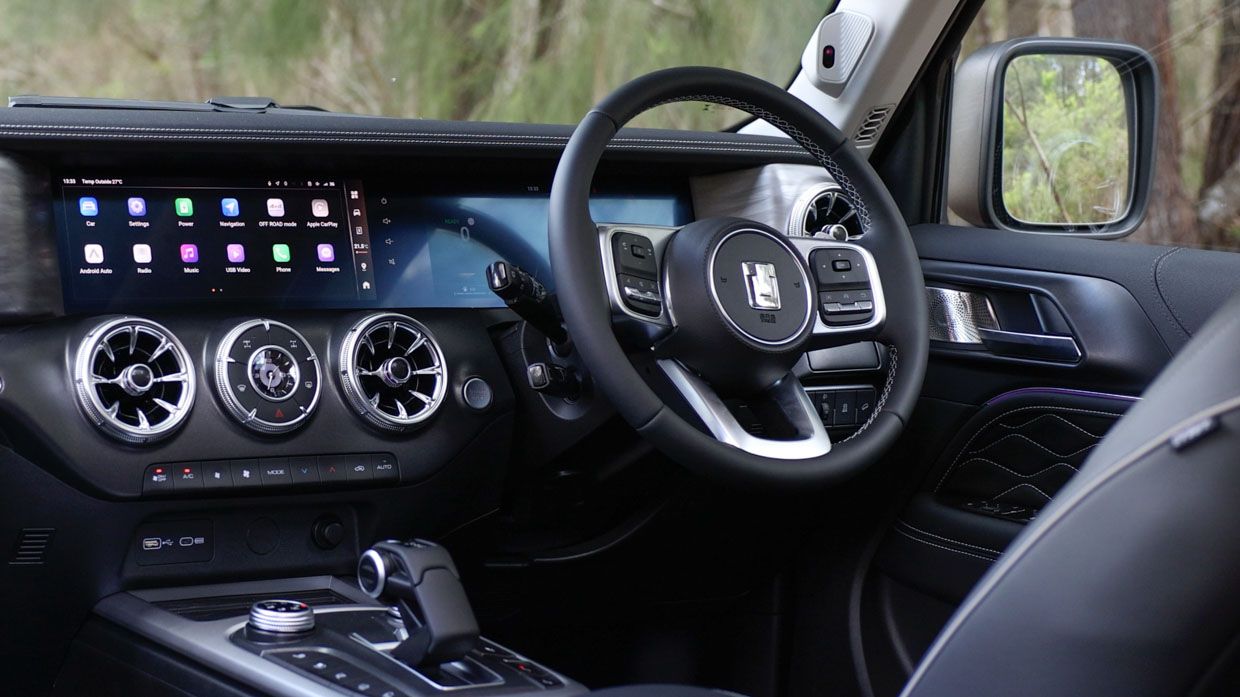
So where this cabin theme seems to punch well above its weight in lower-grade Tank 300 variants, it more meets its aims straight on for its $61K pitch.
I do find that bluff and boxy theme charming, one that robs from the likes of Jeep Wrangler and Ford Bronco, and I can’t escape the feeling that the fetching turbine air vents appear pilfered straight from a bygone Mercedes-Benz.
There are plenty of soft-touch and quality materials and, as we’ve remarked in the past, the Tank 300 feels to be built like a bank vault. A particular shout out goes to the faux-Nappa leatherette seats, which are comfy and welcoming while offering oodles of electric adjustment for both the driver (eight way) and front passenger (six way).
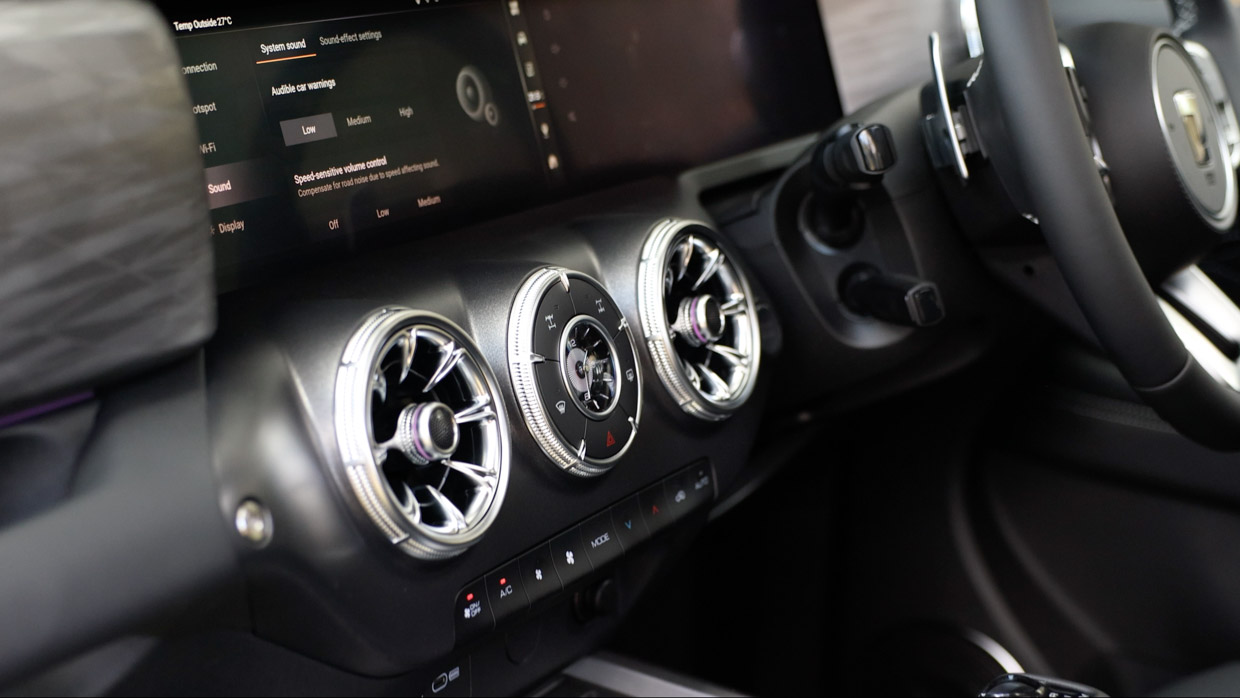
The dash and door trim, too, are very nicely presented, with ornate diamond-stitched door cars and the neat sort-trimmed dash top. The quality of the stitching abound is pretty tasty, too.
Of course, there are plenty of all-terrain touches, such as the array of grab handles – the driver’s A-pillar was omitted because of the wayward driver attention system hardware – and the odd-ball pistol grip transmission controller is pretty cool.
The aforementioned dual-screen array is a bit hit and miss. The 360-degree camera system is excellent and the transparent bonnet effect – that uses a forward camera to display an in-screen feed of the road or track at the undercarriage – does work a treat.
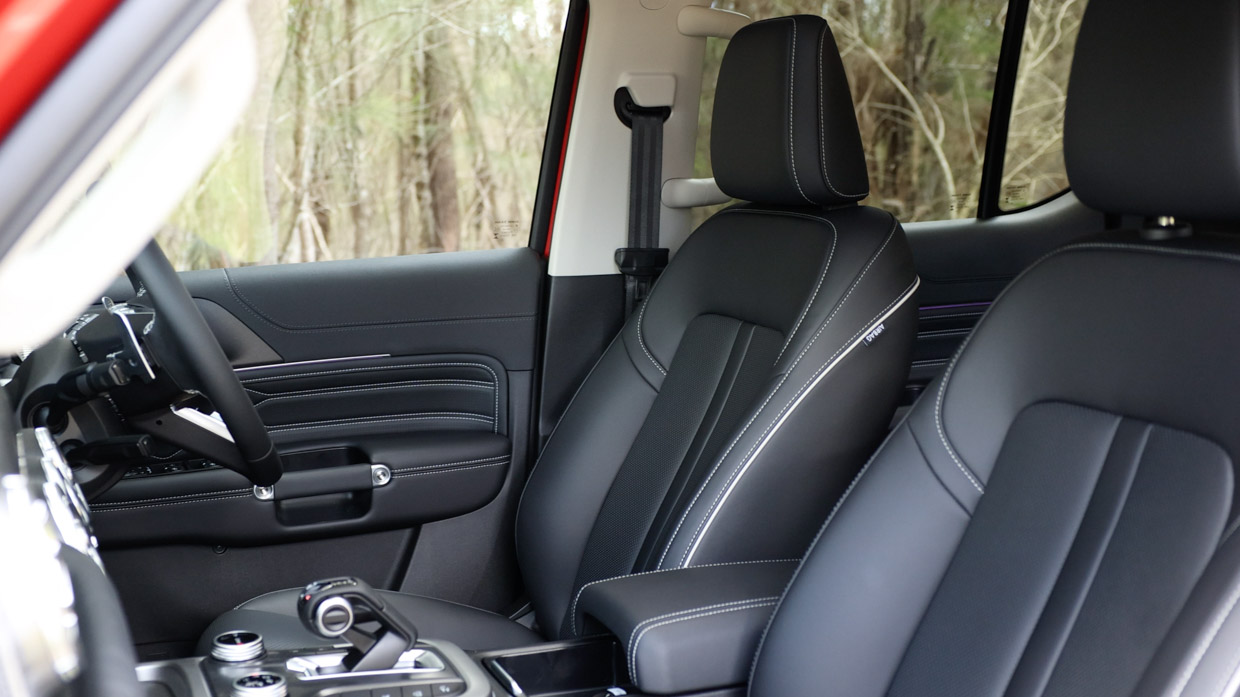
However, burying the complicated and distracting HVAC system into clumsy in-screen menuing, where the driver attention alert berates you as you try to negotiate the temperature and fan controls, is poor execution.
Chasing Cars previously ran a GWM Ute Cannon-X with a similar setup on a long-term test over six months and this was a constant point of frustration among the team, so while you might ‘get used to it’, it’s always a little bit annoying in practice.
It’s not the slickest media system and it lacks the key feature proprietary sat-nav, something that ought to be essential kit for a vehicle promising all-terrain adventure beyond mobile phone reception. At least the top-spec Tank 300 gets wireless Apple CarPlay and DAB+ not fitted to other variants in the lineup.
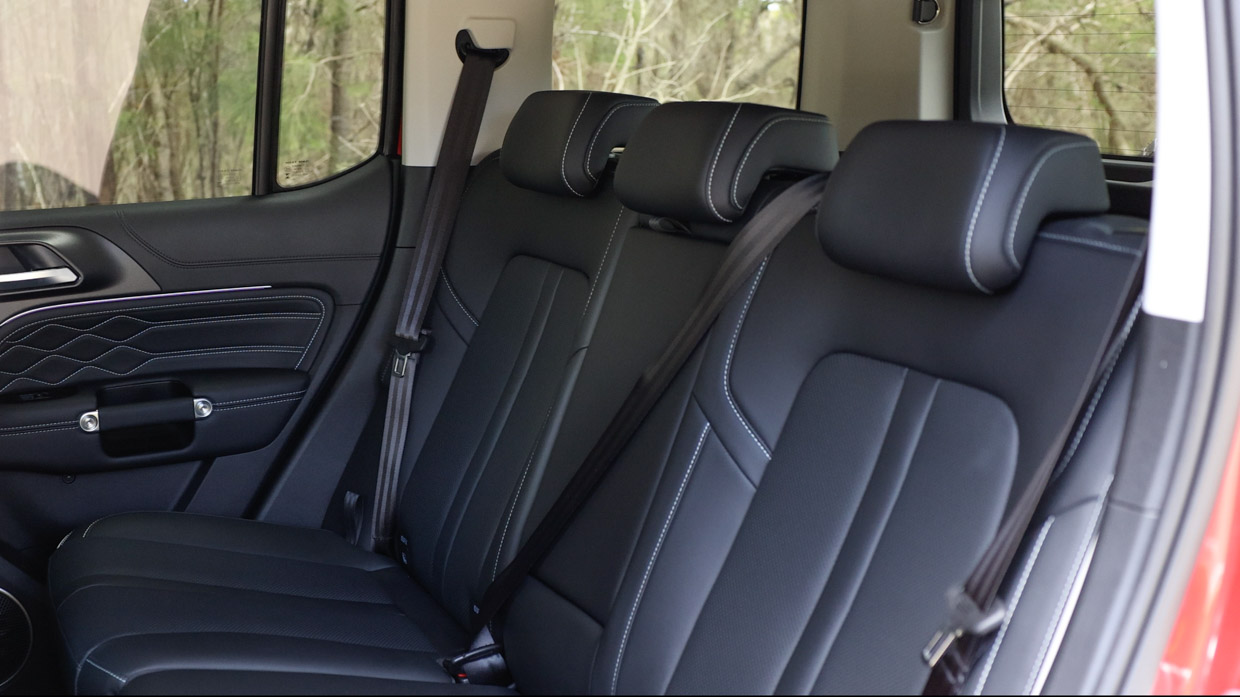
Core comfort is good. The wide cabin, generous glasshouse and standard fit glass roof make for an airy and roomy-feeling environment. Outward visibility, too, is exceptionally good.
Row two affords proper three-adult roominess, with exceptional knee, head and shoulder room. Much of this is thanks to GWM maintaining a generous two-row format rather than trying to squeeze three rows and seven seats into its circa 4.8-metre long form.
The tilt-only (no sliding) adjustment of the rear bench is a slight downmark though not unusual for its segment. And, besides, the bench itself is very comfortable and it’s easy to lounge about during longer on-road trips.
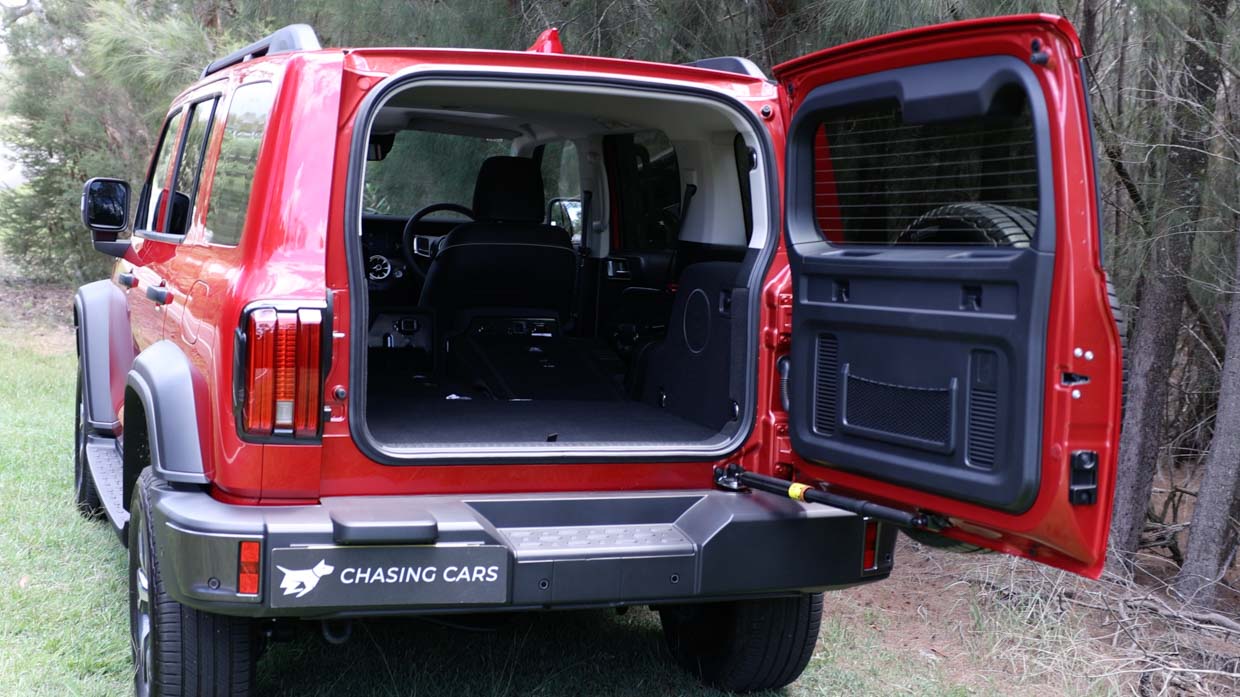
GWM has extended the quality material use through the second row, which includes large grab handles on the B-pillars, rear air vents, dual USB-A device power outlets, large door bins and dual cup holders in the fold down armrest.
The tailgate is a side-hinged door with the full-size spare hanging off the rear, classic 4×4 style. Why? The weight of the combined door and wheel makes for difficult lifting. The main drawback, though, is that you can’t reverse park in tight spots and expect to get easy access to the luggage space.
Available space? It looks about 400 to 450 litres roughly. GWM doesn’t advertise the boot volume. You do get both 12-volt and 220-volt outlets in boot for powering whitegood when you’re off camping in the sticks.
The Tank 300, in all of its powertrain guises, was awarded five stars by ANCAP in late 2022. It scored 88 and 89 percent respectively for adult and child occupant protection, 81 for vulnerable road user protection and 85 percent for safety assist.
As mentioned, the Ultra Hybrid version of the Tank 300 gets the most extensive fitout of the range and includes:
The Tank 300 fits seven airbags, with front-middle, front, side and full-length curtain coverage. It also fits Isofix mounting points on the rear outboard seating positions.
As mentioned above, we found many of the active safety features to be poorly calibrated and/or not well suited to the Australian urban environment.
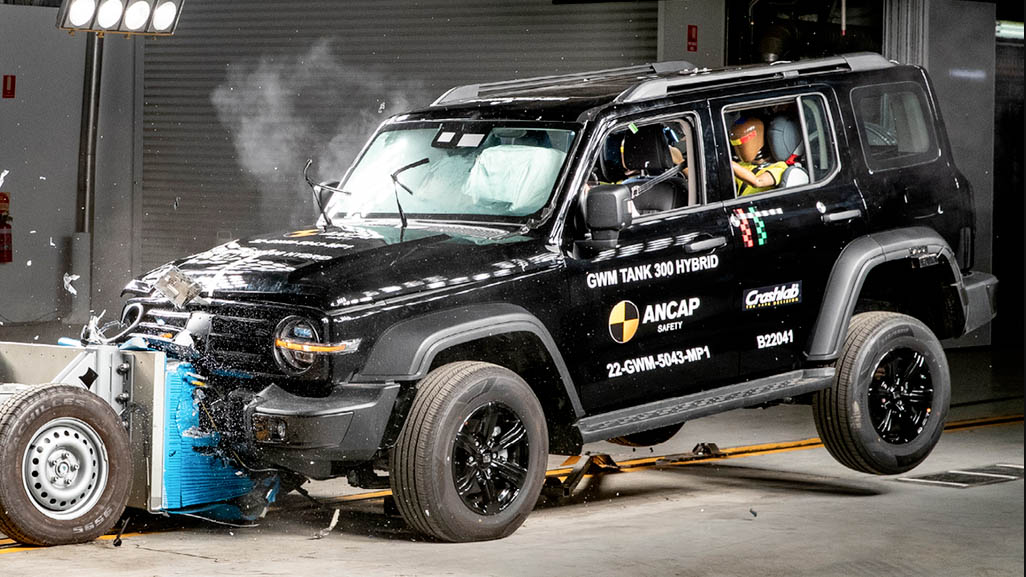
To troubleshoot as to whether the issues were with our specific test car, we intend on retesting with another example of the Ultra Hybrid in future.
Worth noting that after negative feedback about Tank petrol’s lane assistance calibration, GWM Australia did roll out a fix after those variants we launched this year.
The servicing schedule for the Tank 300 requires the first service at 12 months/10,000kms and then 12-month/15,000km intervals thereafter. while every service thereafter is 12 months/15,000kms.
At the time of writing, GWM could not provide servicing costs.
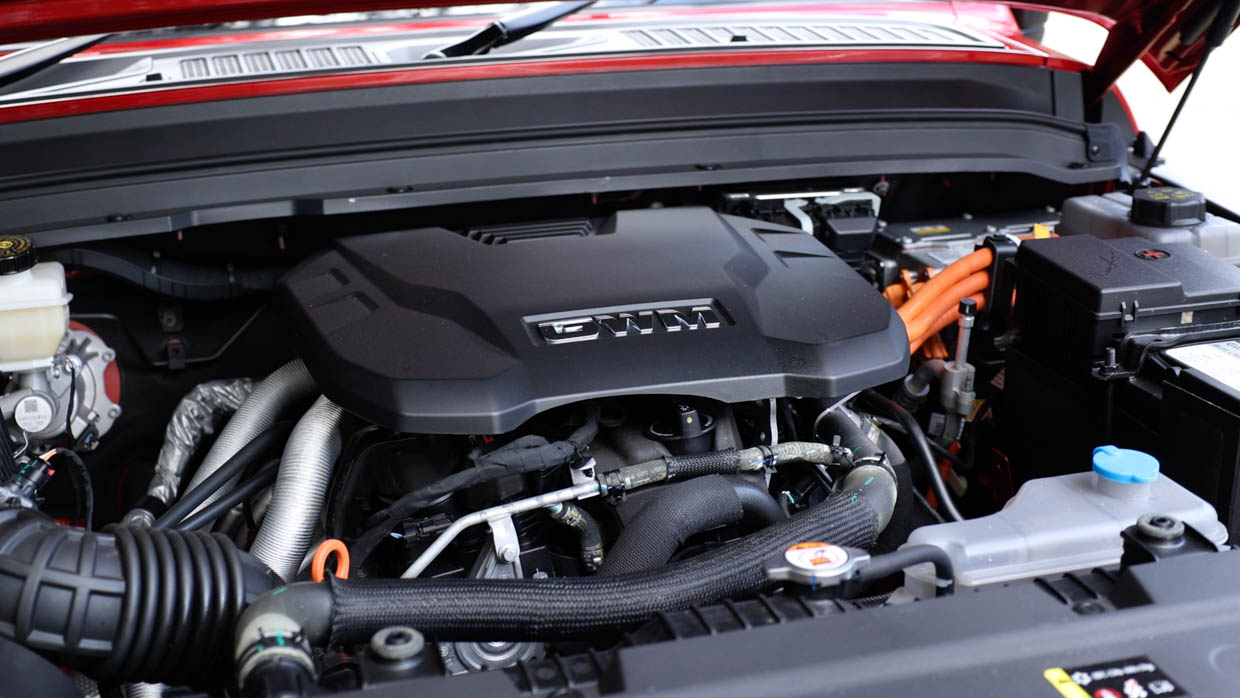
Warranty is a fulsome seven years of unlimited-kilometre coverage. The high-voltage battery pack is covered by eight years of unlimited-kilometre running.
At around 11L/100km around town, the Tank 300 is thirsty for a hybrid, though it will happily run on the cheap 91-octane fuel. It fits a 75-litre tank. In our past review, we found the petrol Ultra version returned figures around the 12.5L mark.
Rewind six months and Chasing Cars’ reception to the petrol Tank 300 Ultra was a reasonably warm one. We called it “a niche adventure-filled all-terrain proposition [that] lands at a price point that really ought to attract many buyers well beyond 4×4 enthusiast circles”.
Further, the petrol flagship’s ladder-frame 4×4 wagon pitch proves “quicker, roomier and a vastly more pleasant place to spend the long hours in” than many of its pricier, less-fancy Thai-built rivals.
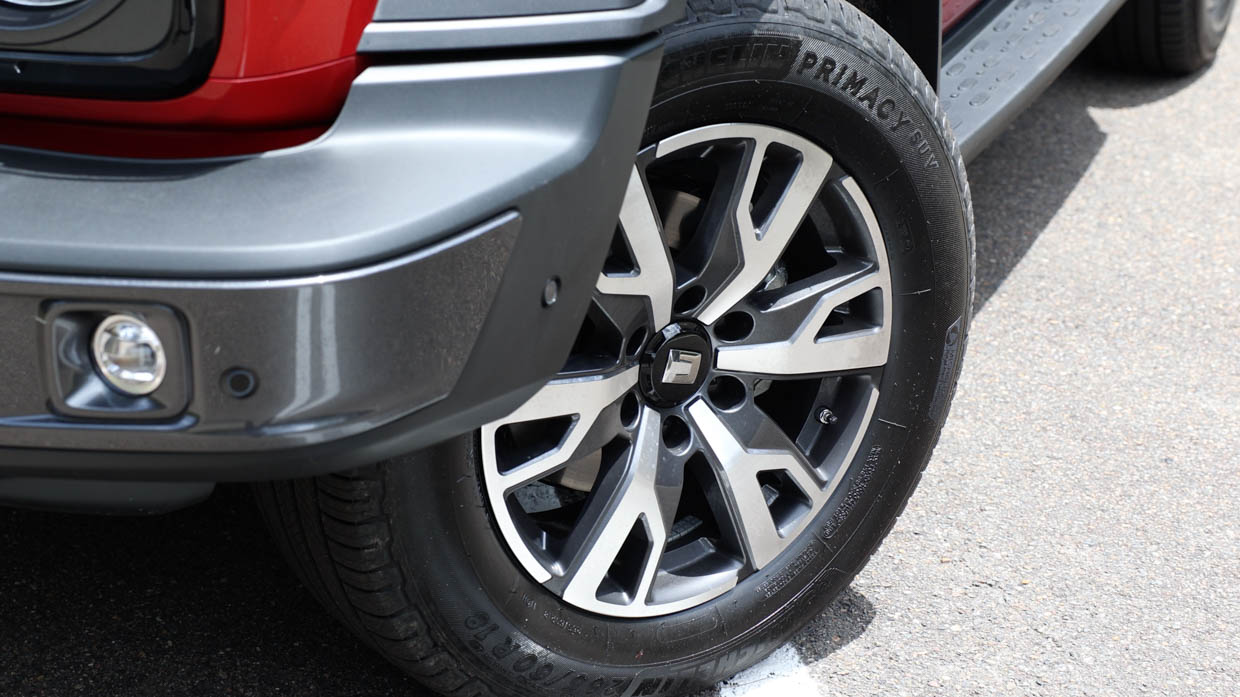
But we’ve reserved less enthusiasm for the Tank 300 Hybrid. At least in its highest Ultra grade with the largest fitout of electronic safety and assistance systems in the lineup.
Don’t get us wrong: more safety is better, if systems and features function as they should or as to be expected.
But when those systems use calibrations clearly at odds with sensible everyday driving styles in Australian conditions, they’re not simply redundant but in fact potentially detrimental.
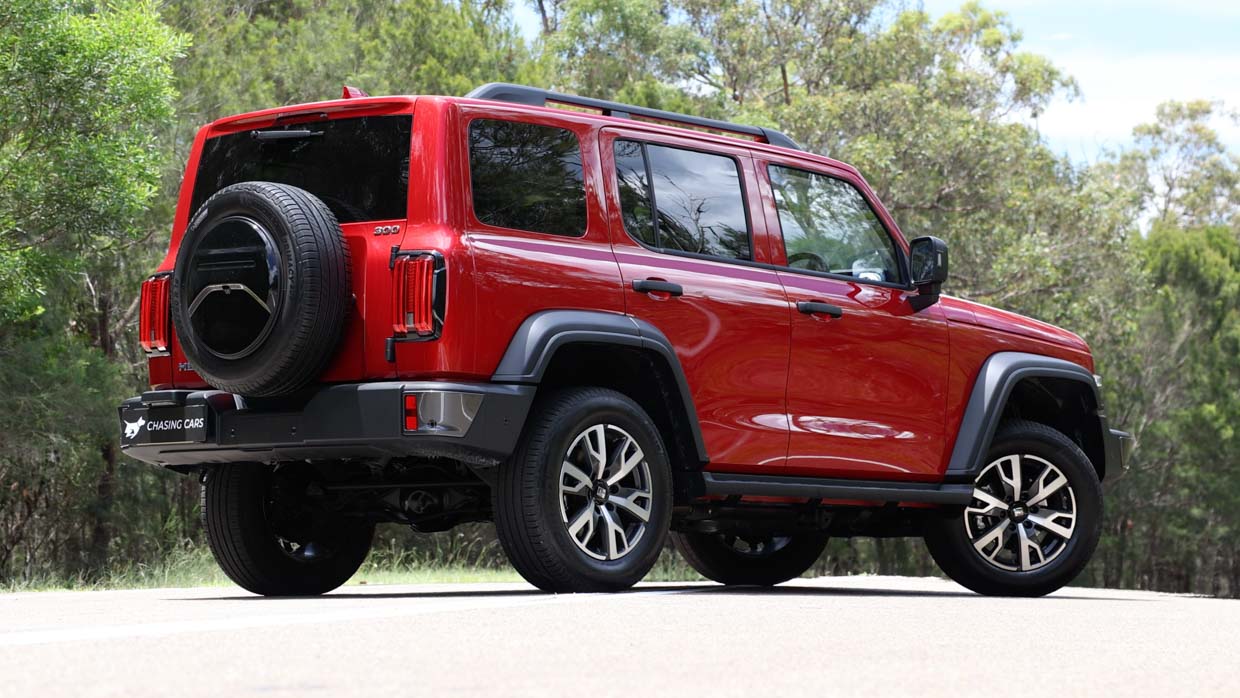
The strong-armed and highly intrusive warning systems are, for your reviewer, easy deal-breakers here. But, again, we’re keen to try another example to see if those gremlins are isolated to a singular bad apple in an otherwise rosy Tank 300 fruit basket.
That said, sheer acceleration apart, it’s tough to make a solid case for the $10K walk-up over the less-expensive and perhaps more value-laden Ultra petrol, which proved not only a nicer vehicle all-round but a better proposition full-stop.
The Hybrid doesn’t necessarily drive better, bring significant improvements in efficiency, ride nicer or feel measurably more upmarket than the Ultra petrol. If there’s a sweet spot in range, it’s the more affordable petrol version that fills it.
Key specs (as tested)
About Chasing cars
Chasing Cars reviews are 100% independent.
Because we are powered by Budget Direct Insurance, we don’t receive advertising or sales revenue from car manufacturers.
We’re truly independent – giving you Australia’s best car reviews.
The estimate provided does not take into account your personal circumstances but is intended to give a general indication of the cost of insurance, in order to obtain a complete quote, please visit www.budgetdirect.com.au. Estimate includes 15%^ online discount.
^Conditions Apply
Budget Direct Insurance arranged by Auto & General Services Pty Ltd ACN 003 617 909(AGS) AFSL 241 411, for and on behalf of the insurer, Auto & General Insurance Company Limited(ABN 42 111 586 353, AFSL 285 571).Because we don’t know your financial needs, we can’t advise you if this insurance will suit you. You should consider your needs and the Product Disclosure Statement before making a decision to buy insurance. Terms and conditions apply.
Indicative quote based on assumptions including postcode , 40 year old male with no offences, licence suspensions or claims in the last 5 years, a NCD Rating 1 and no younger drivers listed. White car, driven up to 10,000kms a year, unfinanced, with no modifications, factory options and/or non-standard accessories, private use only and garaged at night.
^Online Discounts Terms & Conditions
1. Discounts apply to the premium paid for a new Budget Direct Gold Comprehensive Car Insurance, Third Party Property Only or Third Party Property, Fire & Theft Insurance policy initiated online on or after 29 March 2017. Discounts do not apply to optional Roadside Assistance.
2. Discounts do not apply to any renewal offer of insurance.
3. Discounts only apply to the insurance portion of the premium. Discounts are applied before government charges, taxes, levies and fees, including instalment processing fees (as applicable). The full extent of discounts may therefore be impacted.
4. We reserve the right to change the offer without notice.